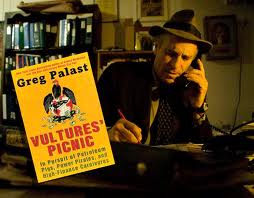Pussy Riot and Brittni Colleps – women in trouble/troubling women
A week ago Friday in Moscow, Russia, three women in their 20s were convicted of “hooliganism” and sentenced to two years in a penal colony. The all-girl members of the impromptu punk band “Pussy Riot” received world-wide attention after being arrested for an anti-Putin performance on the steps of an Orthodox church. Pussy Riot’s supposed primary victim, the Russian Orthodox Church, approved the prosecution of the women but asked the state for leniency. The female sentencing judge ignored the plea, calling the women a danger to society.
On the other side of the world in Fort Worth, Texas, another young woman was found guilty Friday of a serious crime. Brittni Nicole Colleps, a married 28-year-old mother of three and former high school English teacher, will be serving five years in jail for having “improper relationships” with five of her former students. She had sex with some of her students. Colleps’ defense did not contest that sexual activity took place between the teacher and the young men. Instead, her attorneys argued that the students, each of whom was 18 or older at the time of the encounters, were willing participants. Ms. Colleps’ sexual partners tried to keep their activity quiet because they “didn’t want her to get in trouble.” Discretion was unavoidable as Texas prosecutors never even considered a plea bargain. They wanted a jury to serve as “the moral conscience of the community.”
Brittni Colleps should not be teaching. Pussy Riot – now often called a punk art collective – are not good musicians. The consistency in jail time and the inconsistency in responses to those sentences is telling.
Pussy Riot’s ordeal has been a world-wide cause célèbre, with civil rights organizations, politicians and pop stars rising to the band’s defense. The paper of record, The New York Times, considered Pussy Riot’s sentencing front-page news. Those that support the prosecution assert that the women committed a premeditated crime against the church and Russian morality. The state, championing this view, has pursued justice by aligned itself every more closely with the Russian national church. Those who oppose the trial and conviction see it as a case of free speech being muzzled. Pussy Riot are media darlings, even in the tabloids.
Ms. Colleps ordeal is also a global media event with salacious details feeding the frenzy. She had sex with multiple men and one escapade was captured on a cell phone. The video was shown to her jury, adding to the scandal. The Texas prosecutors’ arguments are a defense of the community’s values. District Attorney Elizabeth Beach described Ms. Colleps’ actions as “completely disgusting.” Ms. Colleps’ lawyers, however, described the charges as an unconstitutional intrusion of the state into the sex lives of adults. The students, they argued, were of the age of consent. The jury convicted quickly. Ms. Colleps’ sexual behavior is her crime. Do not expect, however, for Amnesty International or Human Rights Watch to rush to Brittni Colleps’ aid. They and other organizations have been mute, as has the non-tabloid press. The New York Times has published nothing about her.
It is relatively easy for Americans to scoff at Russia’s ham-handed attempts at controlling speech and behavior. The female punk band, whose members look like and act like rebels, fit a recognizable stereotype. Further, Pussy Riot needed to be convicted in order to fulfill that role. Any number of musicians – female or not – can perform protest songs and never be noticed. After all, most musical protests are harmless. Pussy Riot’s conviction affirms a convenient way of understanding human rights, that freedoms are hard to come by outside of our shores. We are able to judge from afar while affirming our own sense of righteousness.
On the other hand, Colleps will gather little sympathy, even though the proportionality of crime to punishment may strike many as dubious. Her sin is more serious than breaking a law that was passed to protect children because her sexual behavior is incompatible with acceptable norms for teacher, mother and wife. In fact, Colleps’ transgression dishonored multiple communities – her home, her school, and, by proxy through her husband who is in the service, the military. Her sexual partners may have thought leniency proper, but framing that defense demands a radical re-casting of her sins into something different. “Free sexuality” does not carry the same currency as “free speech.” She will be punished severely.
Deeply held concerns about changing values and mores are more often than not played through our responses to the crimes of women and their perceived status as criminals. While the actions of Pussy Riot – playing music – and Brittni Colleps – having sex with adult men – may not in and of themselves be characterized as criminal, the context of their actions were judged to be dangerous to their communities. Pussy Riot’s music was a public affront to state and church; Brittni Colleps sexual behavior was an affront to community values for teachers. But in both situations, it is less about who has been put at risk and more about the political gains that are accrued from their prosecutions.
Pussy Riot helps to explain Russia – and it also helps to explain the way that many in the west rush to support a particular concept of free speech. Brittni Colleps can tell us a great deal about America’s concern about sexuality, public schools, and the fascination with the prurient. And both situations are extremely informative about the power of the prosecution to indict, convict and define.


